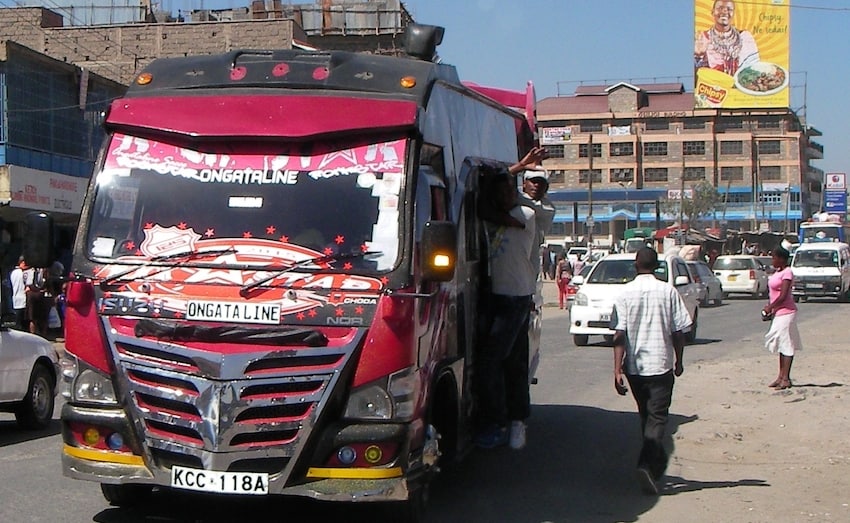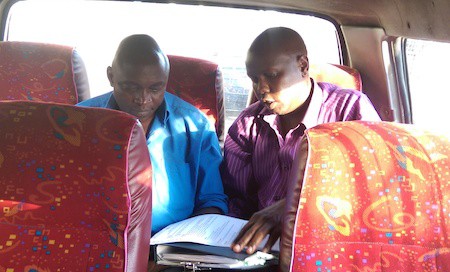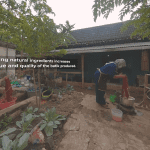Harnessing Mobile Technologies to Make Matatus, and Kenya, Safer
If you live in Africa, your chances of dying in a road accident are the highest in the world. In Kenya, an estimated 29.1 out of every 100,000 people die from road accidents every year, compared to 18.8 in China and 10.6 in the U.S.
In Kenya, more than 90 percent of fatal traffic accidents involve “matatus”[i] the ubiquitous and flamboyant minibuses that account for more than 70 percent of Nairobi’s total daily commuter traffic. More than 3 million Kenyans take matatus every day, and according to a former National Transport and Safety Authority (NTSA) employee, the average Kenyan pays about 100 Kenyan shillings (U.S. $1) for a one-way morning commute. In a country where the average person earns U.S. $76 per month, matatus are the cheapest, most efficient and, for most people, the only transit option.
As I was browsing the web to look for the top things to do when visiting Nairobi, I found that riding a matatu is recommended by one out of every two travelers. Indeed, matatus are deeply embedded cultural icons that reflect the creativity, innovation, hustle, youth and party culture of Nairobi.
Because it is a private business and market entry is not very restrictive, there is intense competition amongst matatu operators. A common sight in the streets of Nairobi is a conductor (fare collector) at a matatu station yelling and enticing pedestrians to get a ride.
Once on board, prepare to be amazed: wifi hotspots, LED lights, large flatscreens, tablets for personal entertainment, state-of-the-art graffiti and sound systems are some of the amenities made available so riders can enjoy their trip. This culture is so loved that there are organizations like Matwana, whose mission is to preserve matatu art and culture, and promote youth employment. They recognize that many livelihoods and industries depend on matatus, such as mechanics, designers, car dealers, petrol stations, insurance providers, laundries, hotels and restaurants.

Photo courtesy of James Kariuki “Wambururu.”
In short, matatus are essential, and they’re here to stay. They represent a substantial market, contributing millions of dollars[ii] to the Kenyan economy. But even though it’s lucrative, the matatu business is also highly inefficient and a scourge to public safety because of the operators’ infamously dangerous driving.
One cause of this dangerous driving is the contract between matatu owners and drivers. Drivers typically must meet daily target revenues set by the owners; they then pocket the rest of a day’s earnings for themselves. These are essentially lease payments to the owners, while drivers and their conductors share the remaining revenue. This creates a strong incentive to drive recklessly in order to pick up as many passenger fares as possible.
In the early 2000s, the Kenyan government identified the daily revenue target model as a key element for reform and attempted to address it with the “Michuki Rules.” However, these rules have made little difference on the street. So, to better study the effect of this inefficient and unsafe contracting structure and to test ways to improve it, economists David Schoenholzer, Gregory Lane and Erin Kelley of the University of California at Berkeley launched the SmartMatatu project. It specifically investigates whether providing owners with real-time visibility into driver behavior will lead to contract reform.
With support from Echo Mobile, a Kenyan mobile technology startup, the team is conducting a randomized controlled trial (RCT) across 250-plus matatus in Nairobi, deploying affordable, off-the-shelf sensor devices in matatus that collect and send data to Echo Mobile’s open-source web platform, Echo Sense. (Note: The author is working as a summer consultant for Echo Mobile.) Each matatu is being fitted with a device that records information on location, ignition, route, distance, speed, acceleration and deceleration, and sends it in real time via mobile network to Echo Sense, which then aggregates, analyzes and visualizes the data. Echo Sense also sends the information to the SmartMatatu mobile app, which some owners can use to track their vehicle’s location and productivity, and to receive alerts when unsafe driving events such as hard braking, speeding and dangerous acceleration occur.

Photo, taken at the Echo Mobile SmartMatatu installation site, courtesy of James Mwangi.
The theory the economists are testing is whether this visibility into driver behavior and productivity will empower and compel owners to incentivize them differently, and whether those adjustments result in increased earnings and efficiency for either party. To compare driver behavior data to the matatus’ business outcomes, Echo Mobile is also collecting data directly from the owners and drivers themselves. Owners fill in surveys through the SmartMatatu app, while drivers fill out a free daily SMS survey from Echo Mobile’s core messaging platform.
For non-tech development practitioners (like myself), this represents a “multi-channel” approach to data collection. This means that single data sets are collected through multiple, integrated mobile phone channels including SMS, automated voice calls and Android applications, depending on the differing contexts, and aggregated. Matatu owners, for instance, mostly use Android smartphones and have proven adept at adopting the Smartmatatu app. Many drivers and conductors still rely on basic phones, so 2G channels like SMS have proven more effective for communication and data collection within those groups. In low literacy populations, automated voice calls are more appropriate.
The power of these channels for data collection in emerging markets like Kenya has been driven largely by the proliferation, advancement and affordability of mobile phone technology over the past decade to nearly 90 percent of the population. With remote sensor technology following a similar trajectory, development and research projects like SmartMatatu can now also incorporate non-human data streams into their multi-channel efforts. These advancements and the emergence of multi-channel platforms that can integrate these varied channels are good news for development practitioners who have been stuck with only one technology, or forced to use multiple channels across a segregated set of data collection platforms that require manual aggregation, or, worst of all, use paper-based approaches where valuable data remains vulnerable to loss, damage or misinterpretation.
SmartMatatu is sampling just a small segment of the matatu industry for now, but at scale it could lead to huge differences. Kenya is growing, urbanizing rapidly, and intra-city public transportation is a hot topic. In 1960, 7 percent of the population lived in cities. In 2014 that portion grew to 25 percent, and the growth is not expected to slow down. That means that in the future there will be even more pressure on transport infrastructure and the already highly congested roads will be even more crowded. Kenya already loses an estimated U.S. $500,000 per day due to congestion alone – and a lot more with traffic fatalities. SmartMatatu is not alone in applying sensor technology to address this problem; Uber is piloting a similar technique to monitor its drivers’ behaviors and improve ride quality for passengers.
With SmartMatatu, however, the driver behavior data may be of interest not only to vehicle owners, but to insurance companies looking to make more accurate risk projections, banks assessing loan provisions, and regulators. The NTSA now has regulations in place that require matatu Savings and Credit Cooperatives (SACCOs) to have a certified fleet management system to remotely monitor their long-distance transport operations. This means SACCOS will require software and hardware similar to SmartMatatu’s in order to retain their licenses, potentially creating a formal, large-scale market for sensor technology. The NTSA has indicated that requirement may eventually be rolled out for all matatus, not just long-distance operations. This means the SACCOs must have much of the same information the SmartMatatu project provides in their SACCO offices. Thus, future demand, scale and sustainability for a project like SmartMatatu using multi-channel technologies certainly does exist.
As a result of this study, if owners develop ways to incentivize their drivers that do not compromise safety, then roads could be safer, service improved, labor practices made fairer, and the matatu industry more profitable and professional. Moreover, there would still be more public transit than private vehicles on the road, with invaluable spillover benefits to complementary industries and their workers.
[i] Thugs or Entrepreneurs? Perceptions of Matatu Operators in Nairobi, 1970 to the Present; Author: Kenda Mutongi ;Source: Africa: Journal of the International African Institute, Vol. 76, No. 4 (2006), pp. 549-568)
[ii] Paratransit in African Cities: Operations, Regulation and Reform, 1st Edition, Eds Roger Behrens, Dorothy McCormick, David Mfinanga. Chapter 4 – Politics, policy and paratransit: A view from Nairobi by Jacqueline Klopp and Winnie Mitullah
Jenny Lee is working in Nairobi as a summer consultant with Echo Mobile and is pursing a master’s degree in public administration at Columbia University.
Top photo courtesy of James Kariuki “Wambururu.”
Small photo courtesy of James Mwangi.
- Categories
- Health Care, Technology



